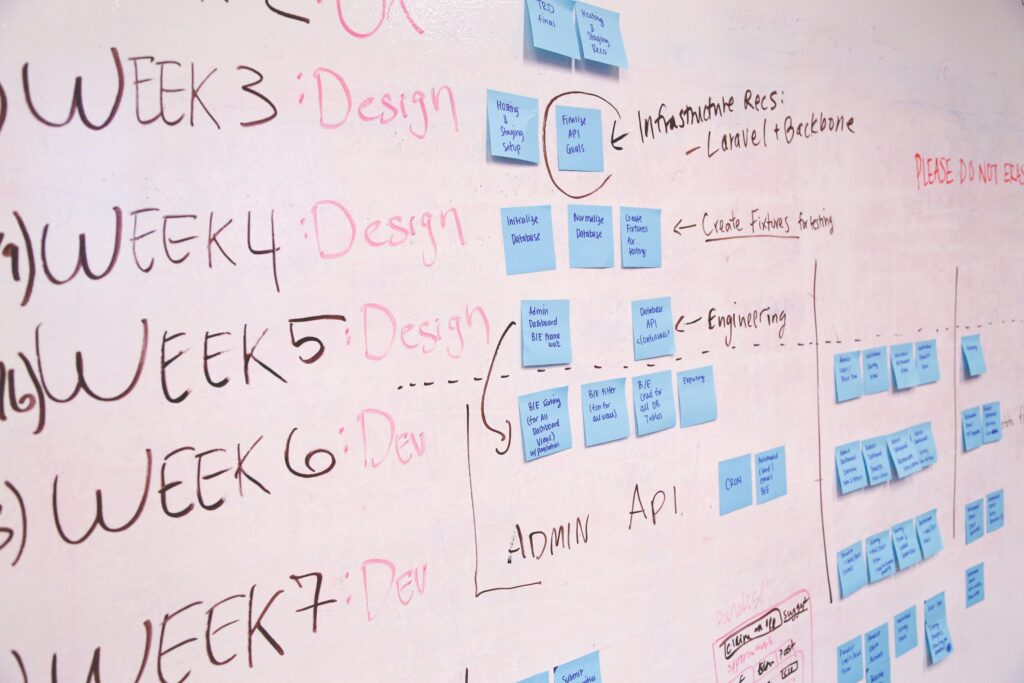Agile Project Management
Agile Project Management (APM) is an iterative approach to managing projects that focuses on delivering value incrementally, ensuring adaptability to changing requirements and fostering collaboration among teams. Originally developed for software development, Agile has expanded to other industries, helping organizations streamline workflows, enhance team productivity, and achieve faster delivery of high-quality products or services.
What is Agile Project Management
Agile project management is a framework that emphasizes flexibility, customer collaboration, and iterative progress. It departs from traditional project management models (such as Waterfall) by focusing on delivering small, functional product parts in short cycles, known as iterations or sprints. This ensures continuous feedback, reduces risks, and allows for course corrections throughout the project lifecycle.
Key principles of Agile are outlined in the Agile Manifesto, which values:
Individuals and interactions over processes and tools
Working software (or product) over comprehensive documentation
Customer collaboration over contract negotiation
Responding to change over following a fixed plan
Agile is particularly suited for environments where requirements evolve rapidly or where teams need to respond efficiently to market shifts.
about the process
The Agile Project Management Process
Agile management follows a cyclical, iterative process designed to deliver continuous value. Here’s a breakdown of the key stages within a typical Agile project:

Planning and Roadmap Creation
The process begins by identifying the overall goals of the project. Although Agile emphasizes flexibility, it still requires a high-level roadmap that defines the product vision, key deliverables, and milestones.
Key activities:
Define the product or project vision
Create a prioritized backlog of features or tasks
Identify stakeholders and assign roles (e.g., Product Owner, Scrum Master, Team Members)
Sprint Planning
Agile divides the project into iterations or sprints (usually lasting 1-4 weeks). During sprint planning, the team selects a set of tasks from the backlog that they can realistically complete within the sprint.
Key activities:
Break down high-priority tasks into smaller, actionable items
Assign tasks to team members
Set sprint goals and deadlines


Execution and Daily Stand-Ups
During the sprint, the team works on their assigned tasks. Agile relies heavily on communication through daily stand-up meetings, where team members share progress, discuss blockers, and align efforts.
Key activities:
Complete tasks incrementally
Track progress using tools like Kanban boards or Scrum boards
Adjust workflows based on challenges encountered
Review and Feedback (Sprint Review)
At the end of each sprint, the team demonstrates the completed work to stakeholders during a sprint review meeting. This meeting provides an opportunity for feedback, ensuring that the product meets user expectations and can be improved further.
Key activities:
Present working features to stakeholders
Collect feedback for future iterations
Update the backlog with new priorities


Sprint Retrospective
After the sprint review, the team conducts a retrospective meeting to reflect on the sprint’s performance. The goal is to identify what worked well, what didn’t, and how to improve in future sprints.
Key activities:
Analyze team performance and workflow
Identify process improvements
Implement changes for the next sprint
Continuous Improvement and Delivery
The Agile process repeats in multiple sprints until the project goals are achieved. Teams continuously refine the product or service based on feedback and evolving requirements. Agile frameworks like Scrum, Kanban, or SAFe offer specific methodologies tailored to different project needs.

about the results
Expected Results from Agile Project Management
Faster Time-to-Market
By breaking the project into smaller iterations, Agile ensures that usable components are delivered quickly. This allows businesses to launch products faster and gain a competitive edge.
Increased Flexibility and Adaptability
Agile’s iterative nature allows teams to pivot or modify the project’s direction based on real-time feedback or market changes, reducing risks and ensuring relevance.
Enhanced Collaboration and Transparency
Daily stand-ups and sprint reviews encourage open communication and teamwork, fostering alignment among team members and stakeholders. Everyone has visibility into the project’s progress.
Higher Customer Satisfaction
Since Agile emphasizes continuous delivery and customer feedback, the end product aligns closely with user expectations. Customers feel more engaged in the process and are happier with the outcome.
Improved Risk Management
By delivering in small increments, Agile reduces the chance of project failure. Problems are identified early, and teams can course-correct before they escalate.
Continuous Improvement
Agile promotes a culture of learning and adaptation through retrospectives. Teams constantly evaluate their performance and strive for improvement, resulting in long-term efficiency gains.
And
Sooooo
Agile project management offers a dynamic and flexible approach to managing projects, making it ideal for organizations operating in fast-paced environments. Its iterative process ensures that teams can adapt to changing requirements and deliver value continuously. With benefits like faster delivery, improved collaboration, and greater customer satisfaction, Agile has become the go-to framework for many industries beyond software development.
If your business is struggling with long delivery times, rigid processes, or misaligned expectations, adopting Agile could transform how you manage projects and achieve goals. Whether you’re launching a new product or optimizing internal operations, Agile can help you stay ahead in today’s ever-changing market.
Ready to embrace Agile? Start small, experiment with short sprints, and empower your teams to collaborate effectively—and watch your projects thrive!